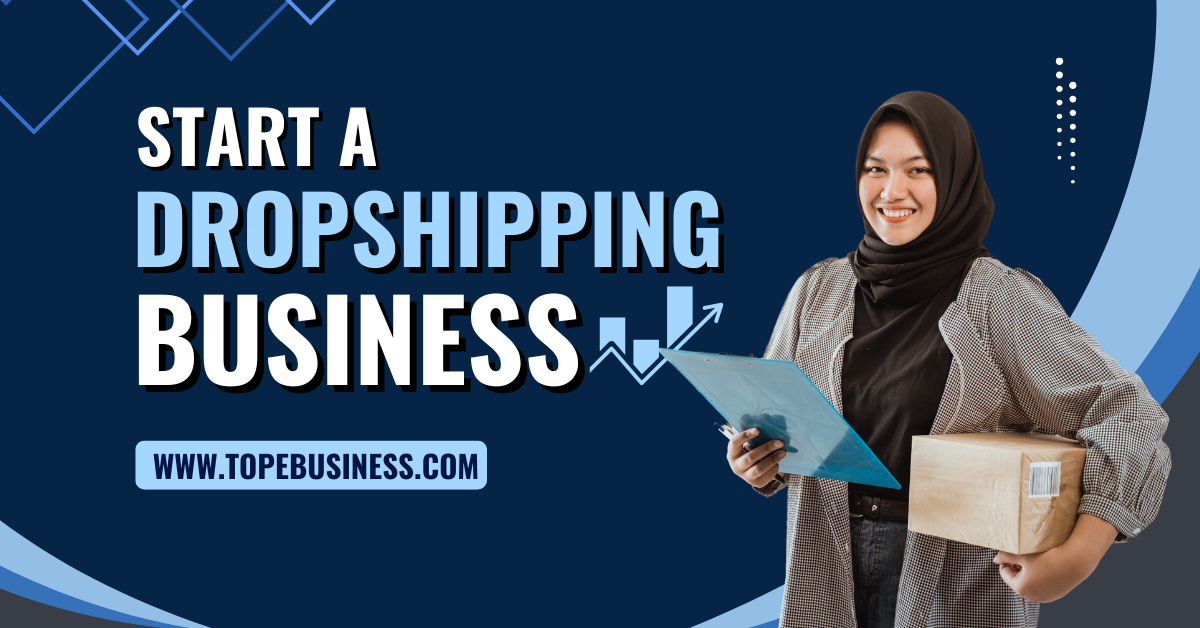Starting a dropshipping business is one of the most accessible and low-risk ways to enter the world of e-commerce. With minimal upfront investment, no need for inventory, and the ability to sell to a global audience, dropshipping is an attractive business model for aspiring entrepreneurs. This guide will walk you through everything you need to know to start and scale a successful dropshipping business from scratch.
What is Dropshipping?
Dropshipping is a retail fulfillment method where an online store sells products without holding inventory. Instead, when a customer places an order, the store purchases the item from a third-party supplier, who then ships it directly to the customer. This eliminates the need for storage, packaging, and logistics management.
Pros and Cons of Dropshipping
| Feature | Pros | Cons |
|---|---|---|
| Low Startup Costs | No need to buy bulk inventory upfront. | Potentially lower profit margins. |
| Ease of Entry | Simple setup with an e-commerce platform. | High competition in many niches. |
| No Inventory Management | No need for storage or warehouse space. | Less control over shipping times and product quality. |
| Scalability | Easy to test and expand product offerings. | Customer service challenges due to third-party suppliers. |
Step 1: Choosing a Profitable Niche
Selecting the right niche is crucial for dropshipping success. Your niche should be:
- Passionate & Evergreen: A niche that has long-term demand.
- High-Profit Margins: Products that allow for healthy markups.
- Low Competition (but still in demand): Avoid overly saturated markets.
- Solves a Problem: Practical and innovative products tend to perform well.
Popular Dropshipping Niches
| Niche | Examples of Products |
|---|---|
| Pet Supplies | Automatic pet feeders, pet grooming kits. |
| Health & Wellness | Posture correctors, home gym equipment. |
| Beauty & Skincare | Facial steamers, LED face masks. |
| Tech Accessories | Wireless chargers, smartwatch bands. |
| Eco-Friendly Products | Reusable straws, bamboo toothbrushes. |
Step 2: Finding Reliable Suppliers
Working with trustworthy suppliers is essential to maintain product quality and timely shipping. Here are some of the best platforms to find dropshipping suppliers:
| Supplier Platform | Key Features |
|---|---|
| AliExpress | Large variety of products, worldwide shipping. |
| CJ Dropshipping | Faster shipping than AliExpress, product sourcing. |
| Spocket | Focus on US/EU suppliers, high-quality products. |
| SaleHoo | Verified suppliers with premium support. |
| Zendrop | Automated fulfillment and branded dropshipping. |
Step 3: Setting Up Your Online Store
Choosing the Right E-commerce Platform
| Platform | Pros | Cons |
|---|---|---|
| Shopify | User-friendly, many apps, great for beginners. | Monthly fees, transaction costs. |
| WooCommerce | Highly customizable, low-cost. | Requires WordPress knowledge. |
| BigCommerce | No transaction fees, scalable. | Steeper learning curve. |
| Wix eCommerce | Drag-and-drop builder, beginner-friendly. | Limited scalability. |
Key Steps in Setting Up Your Store
- Register a domain name – Use Namecheap or GoDaddy.
- Set up your store – Use Shopify or WooCommerce.
- Customize your theme – Use a professional, clean design.
- Add products – Import products from suppliers.
- Set up payment methods – Use PayPal, Stripe, or Shopify Payments.
Step 4: Marketing and Driving Traffic
1. Social Media Marketing
Use Instagram, TikTok, and Pinterest to showcase trending products.
2. Paid Advertising
| Ad Platform | Best For | Cost |
|---|---|---|
| Facebook Ads | Wide audience targeting. | $$-$$$$ |
| Google Ads | High-intent searches. | $$-$$$$ |
| TikTok Ads | Viral potential. | $-$$$ |
3. Influencer Marketing
Partner with micro-influencers for product promotions.
4. SEO for Organic Traffic
- Optimize product pages with keywords.
- Start a blog with valuable content.
- Use backlinks and internal linking.
Step 5: Managing Orders and Customer Support
A great customer experience is vital for repeat business. Use these strategies:
- Automate Order Fulfillment: Use apps like Oberlo or AutoDS.
- Fast & Transparent Shipping: Clearly communicate shipping times.
- Efficient Customer Support: Use email, chatbots, and FAQs.
Step 6: Scaling and Growing Your Business
Once you start getting consistent sales, focus on:
- Expanding Product Offerings: Introduce complementary products.
- Retargeting Ads: Re-engage previous website visitors.
- Email Marketing: Build a loyal customer base.
- Branding Your Store: Create a unique identity and logo.
Final Thoughts: Is Dropshipping Still Profitable?
| Success Factor | Rating (Out of 10) |
|---|---|
| Profit Potential | ⭐⭐⭐⭐⭐⭐⭐⭐ (8/10) |
| Ease of Entry | ⭐⭐⭐⭐⭐⭐⭐⭐⭐⭐ (10/10) |
| Competition Level | ⭐⭐⭐⭐⭐⭐⭐ (7/10) |
| Scalability | ⭐⭐⭐⭐⭐⭐⭐⭐ (8/10) |
| Long-Term Viability | ⭐⭐⭐⭐⭐⭐ (6/10) |
Yes, dropshipping is still profitable in 2025, but success depends on choosing the right niche, finding reliable suppliers, and executing effective marketing strategies. If done correctly, dropshipping can be a lucrative business model that generates a steady income stream.
Ready to Start Your Dropshipping Business?
Follow these steps, take action, and start your journey to financial freedom today!
